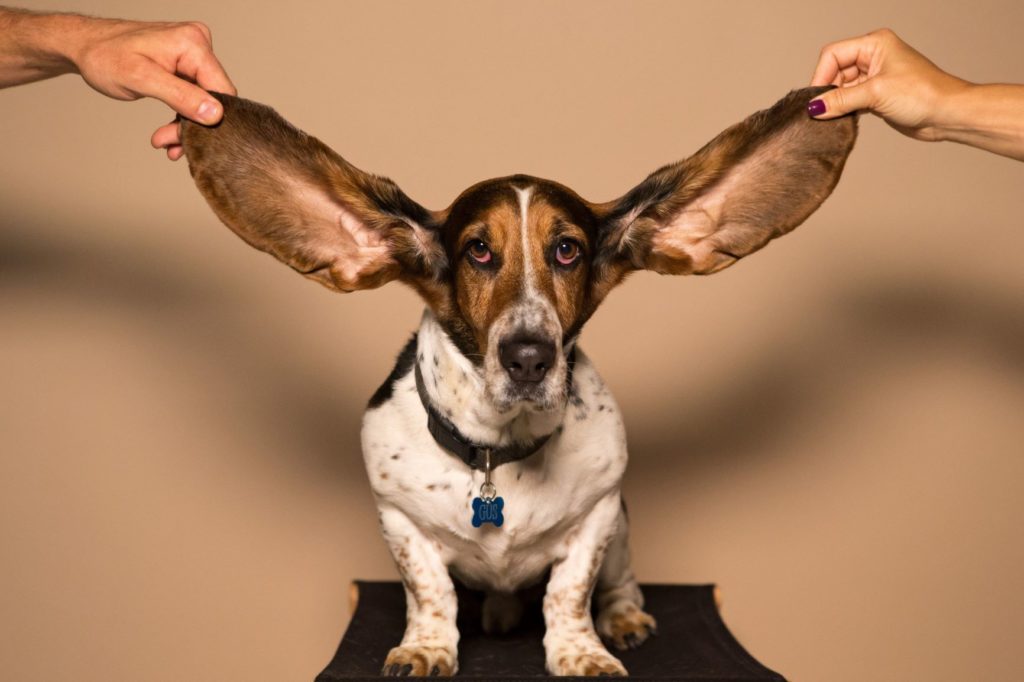Speaking Environment Part 4: 5 Types of Seating Arrangements
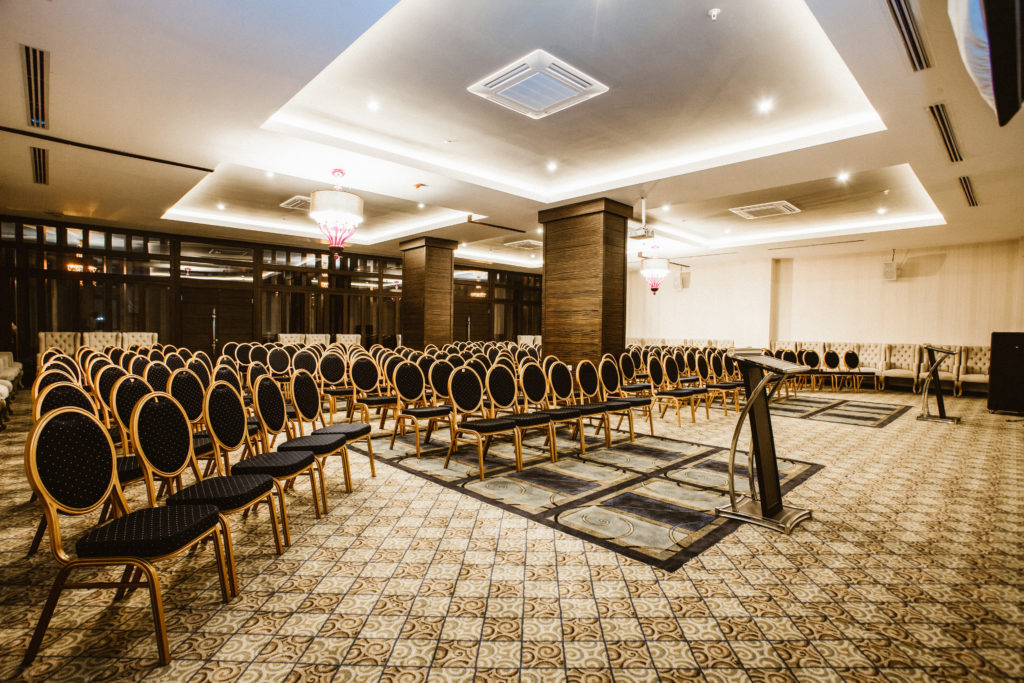
This post is the last post in a four-part series that provides tips and strategies on how to best approach your speaking environment – from the room setup to your timing, as well as other considerations – so that your presentation is heard and experienced exactly as you intended.
Fast-food restaurants often install uncomfortable seats to encourage diners to eat quickly and leave. Pubs, on the other hand, are more likely to have plush stools to keep people comfortable and encourage them to order another round. In both cases, the seating choices are intentional and elicit different results.
Several factors go into your choice of seating arrangements, including the size of your audience, the atmosphere you hope to create, and the level of interaction you intend to elicit from the audience. As you read in the previous lesson, the closer people are to one another, the greater the rapport speakers can build with their audiences. But there are times when other considerations require more distance between audience members, such as a meal being served during a presentation.
In this lesson, we offer tips on some of the more common seating arrangements, along with the pros and cons of each.
5 Types of Seating Arrangements
1. Theater
Chairs are arranged in parallel rows that face the front of the room. You’ll typically find this setup in an auditorium or lecture hall. (See picture above.)
Pros:
- You can maximize the occupancy of the room
- It is easier to build rapport and increase the energy in the room, as people are closer together.
Cons:
- If the seating is all at one level (rather than on risers), some audience members may have trouble seeing you or the screen.
- Audience members are boxed in and might disturb their neighbors when leaving their seats.
- The setup is not conducive to collaboration and interaction among audience members, as they must twist their bodies to make face-to-face contact.
- There is no designated space for attendees to rest laptops, notebooks, or refreshments.
Theater-style seating works best for relatively short, more formal events and addresses, where there is primarily a one-way flow of information, and where the audience is not expected to collaborate with one another, take notes, or participate in hands-on training. Interaction between the speaker and the audience largely takes place through a Q&A. Best for:
- Product launches
- Town hall meetings
- Keynote addresses
- Motivational speeches
- Panels
Depending on the room, you may be able to stagger the chairs in each row so that people can see between the shoulders of the people in front of them. For larger rooms, consider three sections with two aisles in between. Angle the side sections toward the podium or screen. Speaking in especially wide rooms can be challenging, so opt for a tighter seating arrangement that removes seats from the farthest wings.
Finally, encourage early arrivers to sit closer to the front. When your audience is sprinkled about, you face the same threat as those past-their-prime rockers – lots of empty chairs separating each person. One strategy is to place handouts only on the first few rows of chairs, which will encourage people to choose those seats. You can have a colleague add handouts to chairs in each subsequent row as people arrive. That way, if fewer people show up than expected, those present will be closer together and you’ll still be able to create an intimate and energetic environment.
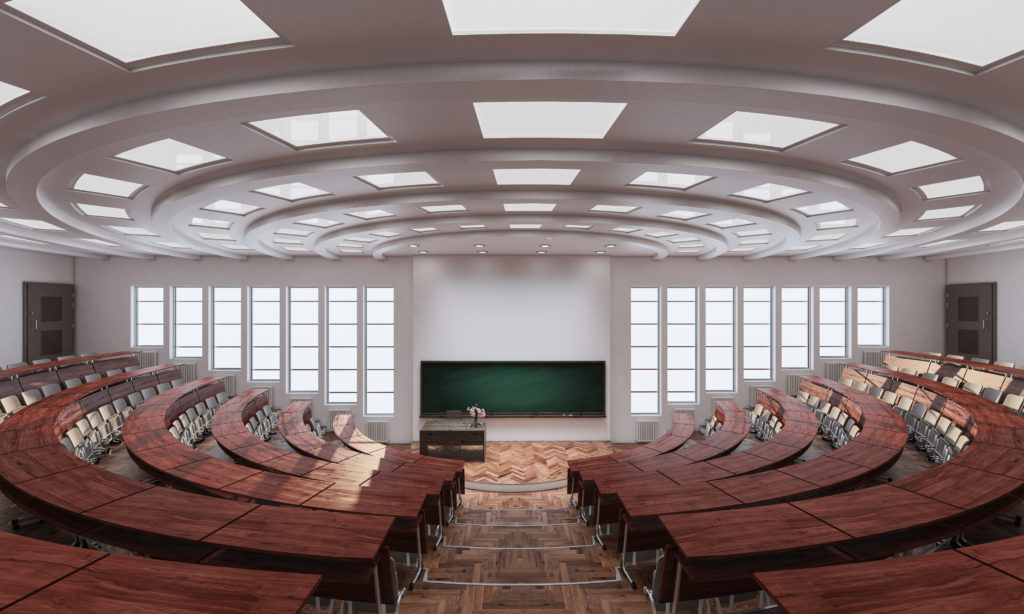
2. Classroom
Imagine your typical college seminar class. Tables and chairs (occasionally separate desks) are arranged in parallel or curved rows facing the front of the room.
Pros:
- Audience members have space for laptops, resource materials, and refreshments.
- This is the most space-efficient setup of all the table arrangements.
- People are still relatively close together, allowing for a more intimate rapport.
Cons:
- If the tables are not angled, curved, or on risers, some audience members might not have clear sightlines.
- The audience might have to disturb their neighbors to leave their seats.
- The setup is not ideal for collaboration and interaction among audience members, as they must contort themselves in some way to make face-to-face contact.
The classroom-style seating arrangements work best when participants are expected to take notes. This is primarily a one-way flow of information from the presenter, who is largely relegated to the front of the room. The Q&A may be less formal and take place throughout the session. Best for hour-long to full-day:
- Trainings
- Seminars
- Lectures
If you are setting up classroom or theater seating in a conference room, you can arrange the tables and chairs in a chevron style and provide a center aisle.
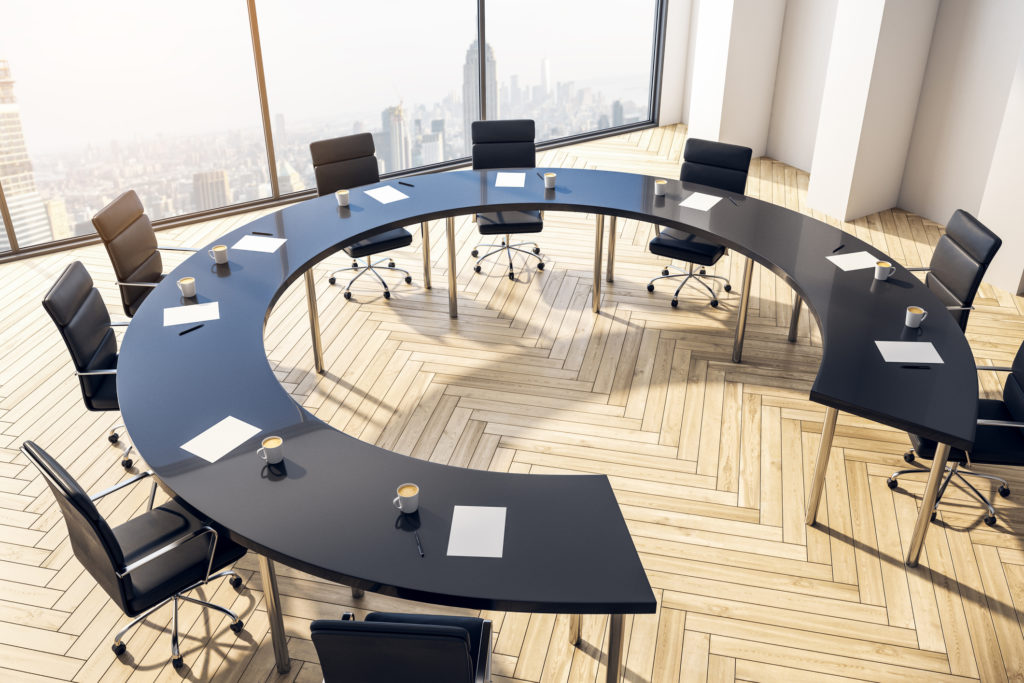
3. U-Shaped (or Horseshoe)
The “horseshoe” can be narrow or wide, but the setup is the same – tables are arranged to form three sides of a rectangle, square, or “U” shape. In these types of seating arrangements, seats are arranged on the outside and the middle area is kept clear.
Pros:
- Lots of eye contact! The audience does not have to contort themselves – mostly – to see other audience members, and they have a clear sightline to the presenter and the screen.
- The presenter can more easily engage and interact with the audience by using the open middle area.
- Group discussion is encouraged.
Cons:
- Does not accommodate larger group events.
- Does not work well in narrow rooms, in which participants can be jammed too tightly against the wall.
- Side-by-side audience interaction requires some twisting and turning in chairs to maintain face-to-face contact.
The U-shaped seating arrangement works best when the goal is a two-way flow of information and participants are expected to take notes, apply the skills they are learning, interact with the presenter and fellow audience members, and provide continual feedback. The presenter is more of a trainer or facilitator in this scenario. The session likely feels more collaborative than formal. Best for:
- Trainings
- Workshops
- Breakout Sessions
- Small-Group Discussions
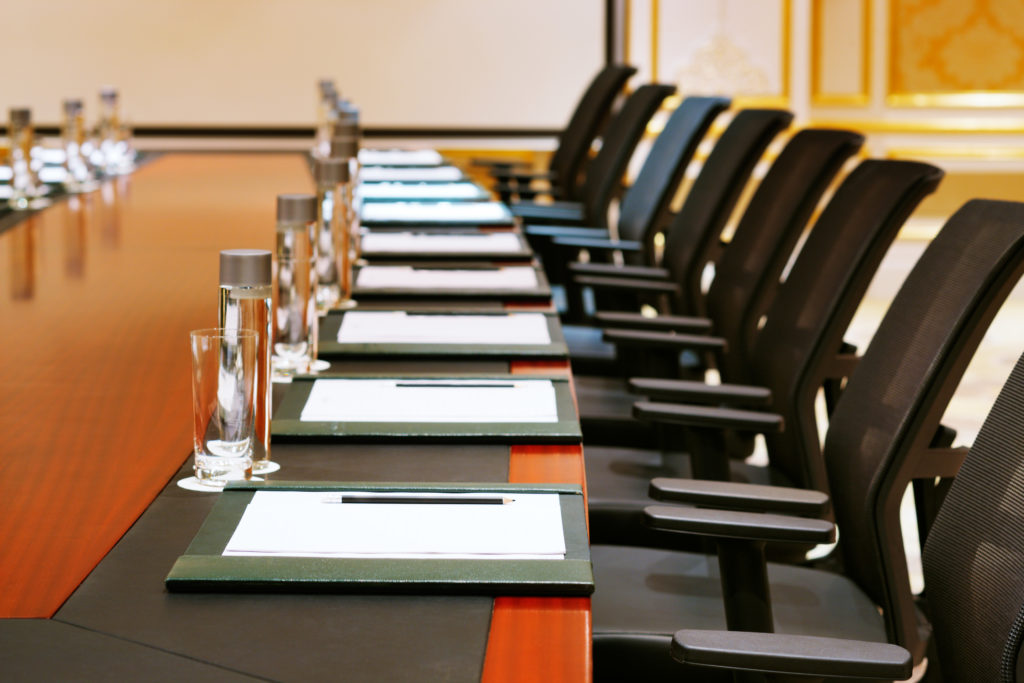
4. Boardroom
Typically, your audience is seated around a large table in a dedicated boardroom or conference space.
Pros:
- The table provides a space for laptops, handout materials, notes, and refreshments.
- There are opportunities for face-to-face contact and engagement among session participants (particularly if chairs swivel).
- Speakers typically have an unobstructed view of all the attendees.
Cons:
- This setup can feel less collaborative than a U-shaped setup. In some situations, sitting on opposite sides of the table can even feel adversarial (such as on opposite sides of a legal dispute).
- Audience members must twist and turn to see people seated on their side of the table.
Boardroom style is typically best for small meetings or events where the focus is on sharing information, discussing priorities, or making decisions. Best for:
- Internal management or staff meetings
- Pitching investors or clients
- Informational sessions
- Trainings
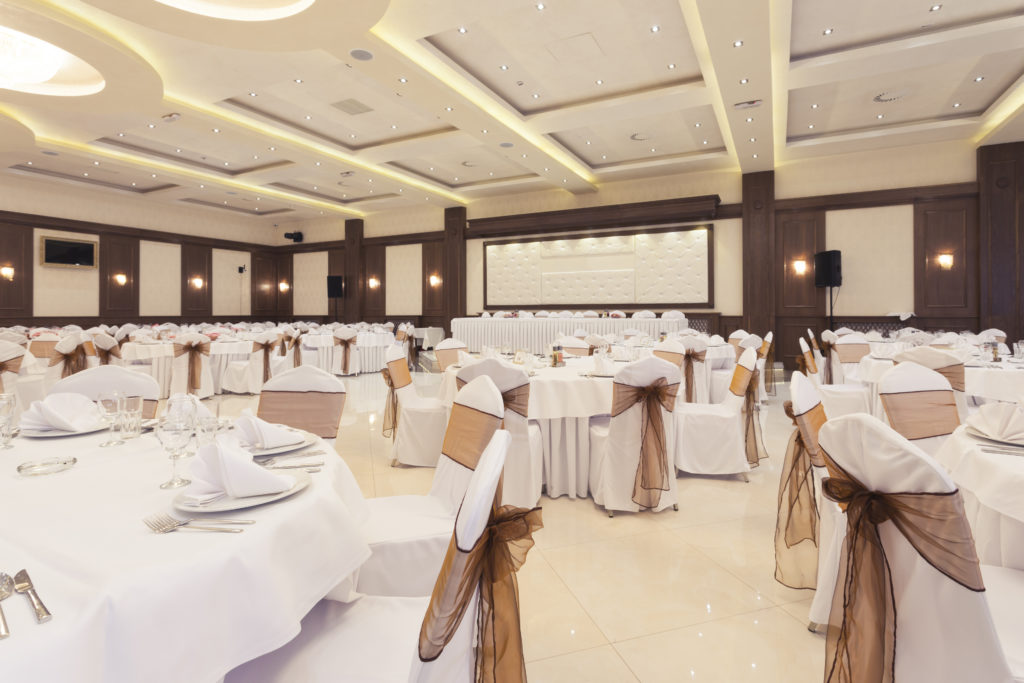
5. Banquet
You’ve probably encountered this seating arrangement at wedding receptions. Tables, usually circular, are situated around the room with chairs around each table.
Pros:
- Small group discussion is encouraged.
- The table provides a space for laptops, handout materials, notes, and meals.
- Face-to-face contact is possible among session participants.
Cons:
- Not everyone at the table is facing the screen or presenter.
- The setup might encourage side conversations.
- The arrangement does not maximize the space.
- It requires larger rooms for smaller audiences. Because the audience is spread farther apart than in a conference room, it can be more difficult to establish rapport and sustain energy.
Banquet style works for, well, mealtimes. It also works for small-group discussions during which the presenter is more of a facilitator. Best for:
- Galas
- Award ceremonies
- Networking dinners
- Brainstorming sessions
- Conference luncheons
A version of this style is Cabaret (or Crescent). In this instance, only half of the table has chairs. This can improve sightlines for the audience, but it also requires more space and increases the distance between the speaker and the audience.
Previous posts in this series:
Part One: The Room (and other Considerations)


